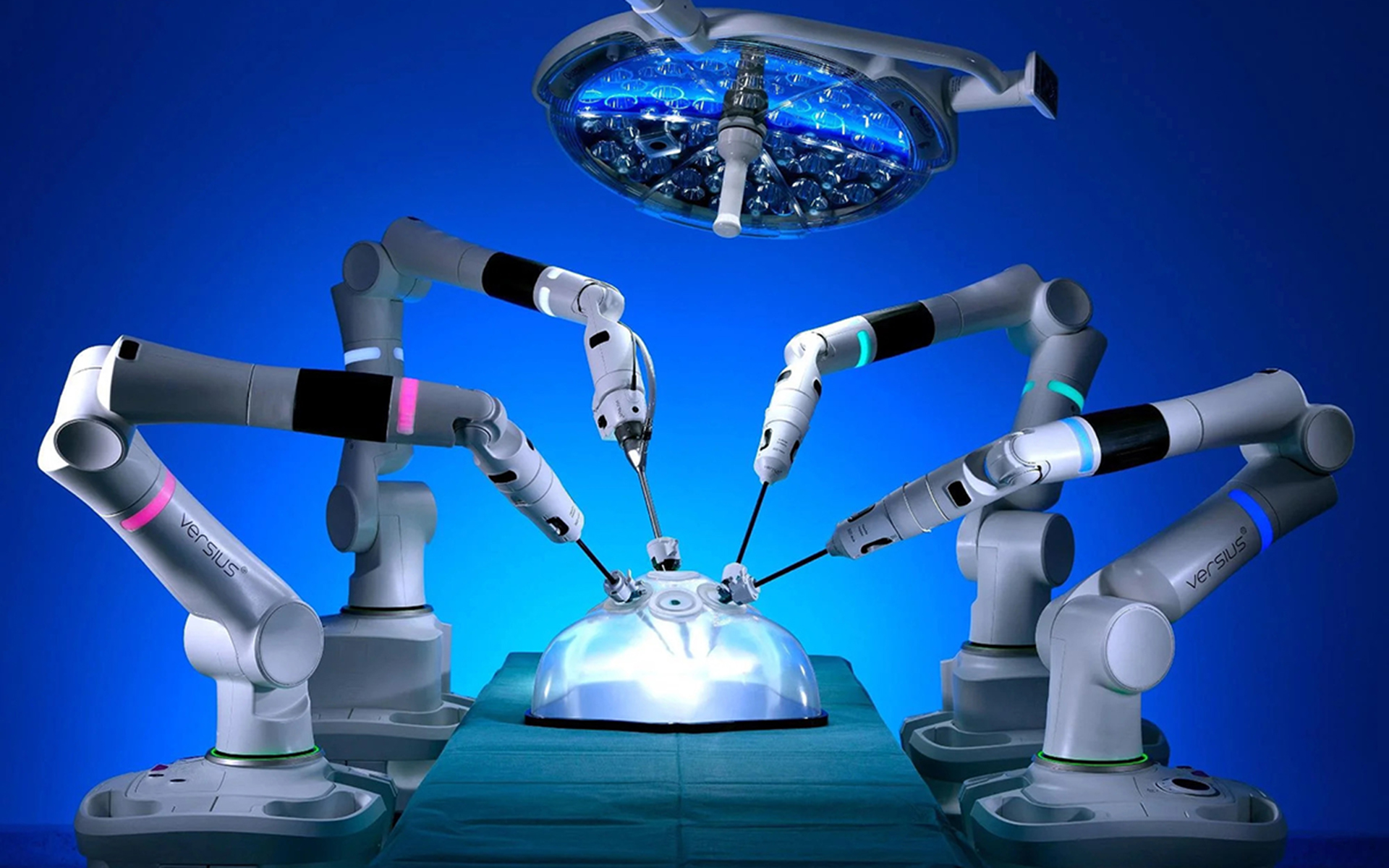
Robotic Surgery
Robotic surgery in urology uses robotic-assisted systems to perform minimally invasive procedures with enhanced precision, vision, and control. A surgeon controls robotic arms with surgical instruments and a camera from a console, viewing a magnified 3D image of the operating site. This technique offers benefits like smaller incisions, reduced recovery times, less blood loss, and improved outcomes for various procedures, including prostate, kidney, and bladder surgeries.
How It Works
- Surgical Console: The surgeon sits at a console, controlling the robotic instruments and camera with specialized handles.
- Robotic Arms: These arms hold small, articulated instruments that can rotate and bend with greater degrees of freedom than a human hand, allowing for intricate movements in tight spaces.
- High-Definition Vision: A specialized lens provides a magnified, stable 3D view of the surgical area, giving the surgeon a clearer perspective.
Common Procedures Performed
Robotic surgery is frequently used for urologic conditions, particularly in uro-oncology.
- Prostate Cancer: Procedures such as radical prostatectomy.
- Kidney Cancer: Including partial nephrectomy (removing part of the kidney) or nephrectomy (full kidney removal).
- Bladder Cancer: Procedures like robotic cystectomy.
- Other Conditions: Adrenal tumors, retroperitoneal tumors, kidney transplants, and complex reconstructive surgeries.
Advantage of Robotic Surgery
- Small Incision.
- Less Pain.
- High Resolution Camera.
- Early Reture To Work.
- 3D 4K Vision.
- Minimal Blood Loss.
- Faster Recovery.
- Short Stay In Hospital.
Key Benefits
- Enhanced Precision: Robotic instruments can move with greater accuracy and without tremors, allowing for delicate maneuvers.
- Improved Vision: A magnified 3D view helps surgeons visualize the anatomy with greater detail.
- Minimally Invasive: Procedures are performed through small incisions, which leads to less tissue damage.
- Faster Recovery: Patients often experience quicker recovery, reduced hospital stays, and less pain compared to traditional open surgery.
- Ergonomics for Surgeons: The console allows the surgeon to work in a more comfortable, ergonomic position, potentially reducing fatigue during complex cases.
Common Procedures Performed
Robotic surgery is frequently used for urologic conditions, particularly in uro-oncology.
- Prostate Cancer: Procedures such as radical prostatectomy.
- Kidney Cancer: Including partial nephrectomy (removing part of the kidney) or nephrectomy (full kidney removal).
- Bladder Cancer: Procedures like robotic cystectomy.
- Other Conditions: Adrenal tumors, retroperitoneal tumors, kidney transplants, and complex reconstructive surgeries.